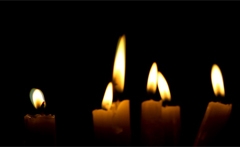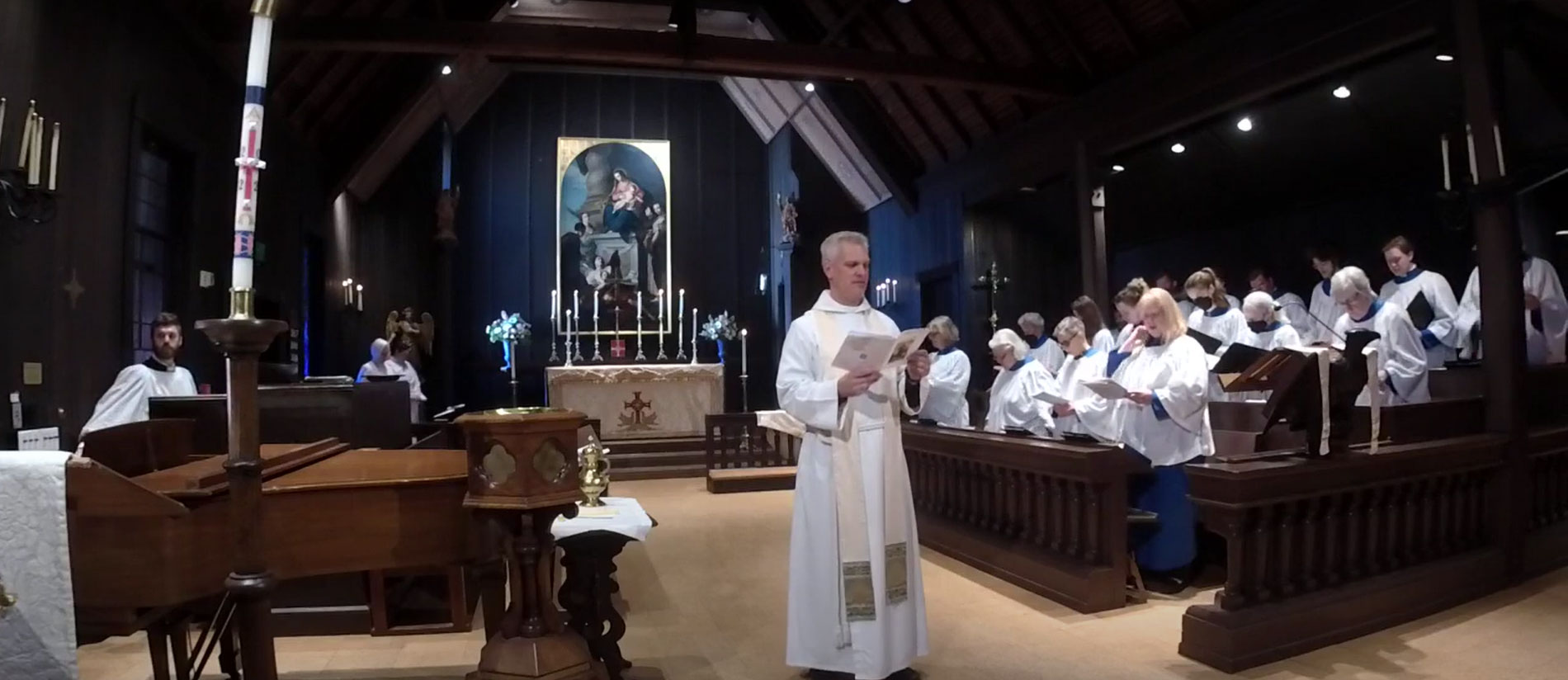Weekly Reflection - 4/26/2023

St. Mary's Reflection: Eric Choate, Director of Music
The Choral Mass is one of the Church's greatest gifts to the world. There are five movements--Kyrie, Gloria in excelsis, Credo, Sanctus & Benedictus, and Agnus Dei--which we sing every week because they are central to our faith and obligatory to the celebration of the Eucharistic liturgy.
This text is the basis of thousands upon thousands of choral compositions ranging between Gregorian Chant settings, highly embellished Renaissance polyphonic settings, neat and orderly Classical settings, lush Romantic settings, and avant-garde modern settings. Some are short, some last well over an hour; some are for a cappella chorus, some are for a massive complement of singers and full orchestra. The appeal of this genre is so vast that the Mass has found an equally welcomed home in the concert hall, as in the liturgy.
At St. Mary's, we usually sing the Mass as a congregation, a moving testament of our corporate belief. On occasion, to uplift an important feast, the choir sings the Mass on behalf of the faithful, during which the congregation is invited to participate fully, but differently. When you listen to the same words in a different musical setting, you might notice something different--a word or phrase that you never particularly noticed might leap off the page, or you may hear the text in a different way that inspires a deeper and more complex relationship with God.
The Ordinary of the Mass is so rich that composers across centuries continue to find new ways to illuminate the text with music. Does the Gloria in excelsis emphasize God's reign and Christ's majesty with earthly pomp, or does it suggest God's other-worldly enterprise through ominous tones? Is the Sanctus mighty and powerful, or is it hushed and holy? When we sing the name Jesus, is it done so with full-throated adoration, or with the holiest reverence? How does the composer set the "Et incarnatus est," a point during the Credo when many Christians bow their heads to acknowledge the mystery of the Incarnation? For instance, in Mozart's Mass in C-minor, the soprano soloist sings an 8-minute aria with some of the sweetest music he could possibly put on paper. Eight sublime minutes to sing three words: Et incarnatus est, and was incarnate. Is the "Crucifixus" a sorrowful lament, or is it written with the wise and beautiful understanding that all of God's works are good? Composers pour their own experience into their music, and we are left with the richest wealth of different offerings of the same texts. God speaks to us in many and varying ways, and the complexities of God's appearance in our lives is mirrored through different settings of the Mass.
On Sunday afternoon, we get to hear a particularly special Mass setting in the context of a concert with string orchestra and a small chorus: Arvo Pärt's Berliner Messe. Pärt is an Estonian composer and Orthodox Christian. He invented a type of musical language called "tintinnabuli," a way of organizing pitches to evoke the sound of bells. For each movement, he invites us into one particular tonality, where we rest for a while in a meditative trance and hear the words ring throughout the church. His inspirations come from the antiquity of Gregorian Chant and the contemplative harmonic pacing of minimalism. It is not a William Morris tapestry; it is a Rothko painting. On the surface, it looks like a sheet of color, but up close, subtle color variations and beautiful brush strokes appear. We are left with the impression that we've not looked at a painting but have had a transformative experience.
I hope you are able to come have this experience on Sunday afternoon. The concert begins at 5:00 p.m. in the church.
Faithfully,
Eric Choate, Director of Music
